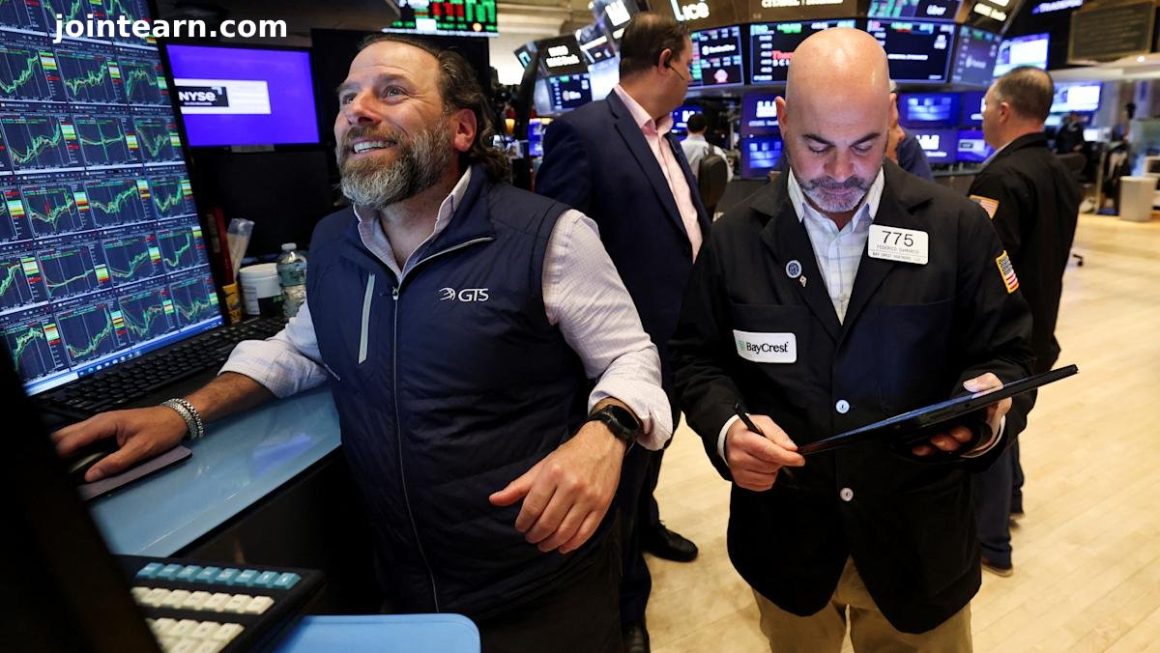As U.S. Treasury yields have surged in April 2025, Wall Street remains relatively unconcerned, despite the sharp fluctuations in bond prices. The 10-year Treasury yield, which started the month around 3.9%, spiked to nearly 4.6% following President Trump’s “Liberation Day” announcement on April 9. Since then, yields have stabilized between 4.3% and 4.4%, prompting some investors to question whether a “sell America” trend is emerging.
What Rising Treasury Yields Signal for the Bond Market
Treasurys typically act as safe-haven assets during times of market volatility, but the recent rise in yields has puzzled analysts. Higher yields suggest that bond prices are falling, which runs counter to the usual behavior expected during periods of economic uncertainty. Despite this, some strategists remain calm, attributing the rise in yields to factors such as the rising term premium, rather than a loss of confidence in U.S. debt.
The Term Premium and Market Uncertainty
Jeff Schulze, Head of Economic and Market Strategy at ClearBridge Investments, explained that the current yield increase is largely driven by a rising term premium—an extra yield investors demand for holding long-term debt. He pointed out that after hovering near zero for years following the financial crisis, the term premium has recently climbed to around 50 basis points, aligning more closely with historical norms. Schulze likened current market conditions to 2022, when yields spiked due to inflationary pressures and the Federal Reserve’s aggressive rate hikes.
Trump’s Trade War and the Impact on Treasury Yields
The uncertainty surrounding U.S.-China trade dynamics, coupled with President Trump’s comments on the Federal Reserve, has added to the current market volatility. The potential for higher tariffs or even shifts in U.S. monetary policy has left investors on edge. Despite this, analysts believe that rising yields aren’t signaling a collapse in confidence over U.S. debt but are instead a reflection of heightened market uncertainty.
Will the Fed Cut Rates in 2025?
As market volatility continues, some analysts predict the Federal Reserve may lower interest rates later in 2025. Kelsey Berro, a fixed-income portfolio manager at JPMorgan Asset Management, noted that if the economic data supports it, the Fed could cut rates in June. If this happens, it would likely result in a more stable range for the 10-year yield, potentially between 3.75% and 4.5%.
Derisking and Foreign Investment in U.S. Bonds
One factor contributing to rising yields is the unwinding of highly leveraged positions in U.S. assets. Schulze highlighted that foreign investors, who had previously accumulated U.S. Treasuries over the past 15 years, are now “derisking” amid growing uncertainty. However, this shift does not indicate a loss of confidence in the U.S.; rather, it reflects a broader recalibration of risk exposure in global markets.
Treasuries Remain the World’s Safe-Haven Asset
Despite the recent sell-off in Treasuries, analysts like Lawrence Gillum, Chief Fixed Income Strategist at LPL Financial, argue that U.S. Treasuries remain the world’s preeminent safe-haven asset. According to Gillum, the sell-off in the Treasury market is a temporary response to deleveraging pressures, rather than a permanent shift away from the safety of U.S. bonds. As long as the U.S. dollar maintains its status as the world’s reserve currency, Treasuries are likely to continue being seen as a safe investment in times of global uncertainty.
Outlook for U.S. Treasuries and Bond Yields
As the U.S. bond market navigates through these uncertain times, analysts believe that any shift away from Treasuries’ safe-haven status would be a slow and gradual process. For now, despite the volatility in the bond market, U.S. Treasuries continue to be a cornerstone of global investment strategy.












